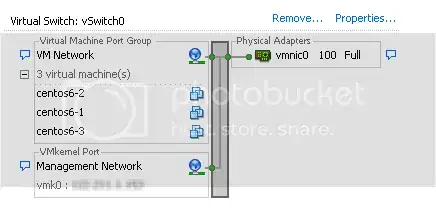Pulling my hair for past few days over this. Can some VMWare ESXi expert help out?
I recently decided to give ESXi 5.5 a try. Installed it, got connected through vSphere client, and created few CentOS 6 VMs.
My ESXi configuration has all 3 CentOS6 guest VMs using the same vSwitch0:

My problem is only one of the VMs can get an automatic DHCP address, and hence can correctly connect to Internet. Rest of the VMs cannot get an IP address at all.
Is there any special setup required to allow guest VMs to get using the Internet?
I noticed that when I created the first VM, it was up and running, connected to Internet normally. When I installed second VM, trying to enable the network during CentOS install complained saying it cannot activate eth0. I did nothing extra, and this has stumped me for past few days.
Things I tried so far-
- Tried switching from ESXi 5 to ESXi 4 - same problem
- Tried enabling 'Promiscous mode' on vSwitch0's properties - same problem
- Tried a guest Windows VM - same problem, could not get IP
The ESXi hosts gets a dynamic DHCP assigned IP. I tried changing that to static, but nothing changes.